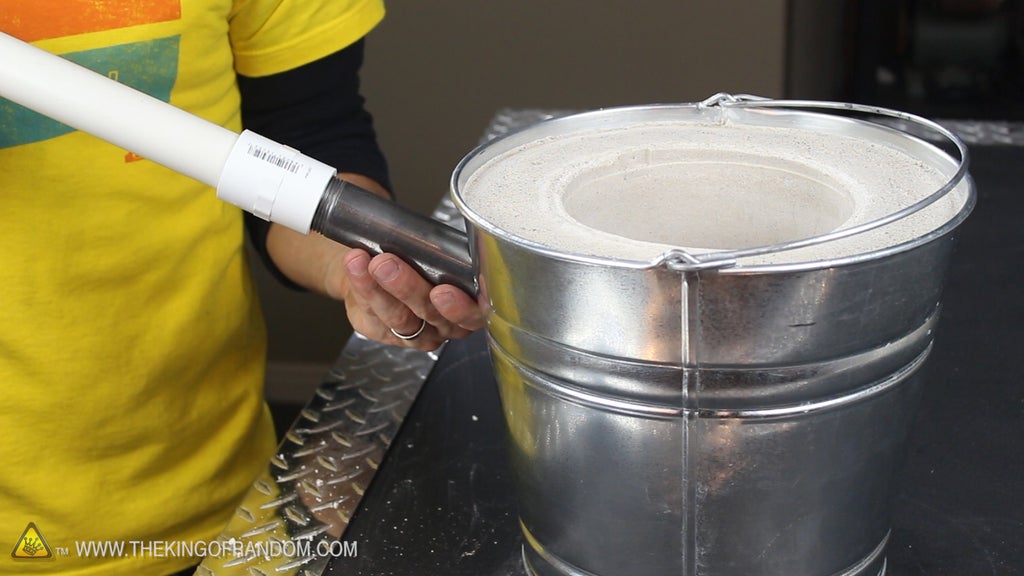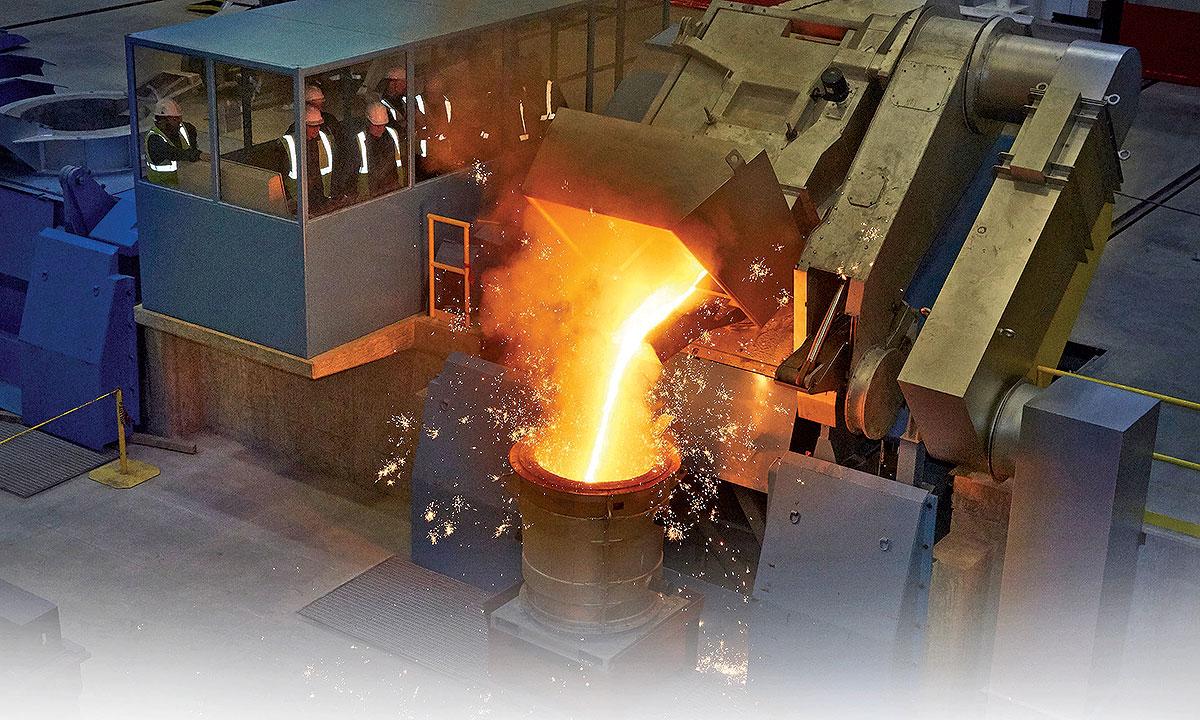Discover the Cutting-edge Strategies Utilized in a Metal Foundry for Superior Casting Results
In today's competitive manufacturing landscape, metal foundries are progressively taking on ingenious techniques to boost spreading results - Aluminum Foundry. Advanced computer simulations allow for exact modeling of liquified metal habits, while 3D printing allows quick manufacturing of complicated mold and mildews. Furthermore, environmentally friendly materials and automation simplify operations. These growths guarantee considerable enhancements in efficiency and quality assurance. Nevertheless, the effect of these innovations on sustainability and manufacturing methods continues to be to be completely discovered
Advanced Computer Simulations in Metal Casting
Advanced computer system simulations have actually reinvented the metal casting procedure by boosting accuracy and effectiveness. These sophisticated tools permit designers to create digital models of cast components, allowing them to examine and forecast the behavior of liquified metal throughout the casting stage. By replicating different parameters such as temperature level, circulation price, and cooling prices, makers can identify possible problems before physical production starts.
This positive technique decreases waste and lessens expensive errors, eventually bring about enhanced item quality. In addition, simulations assist in the optimization of mold designs, guaranteeing that they fulfill the particular needs of each job. The combination of computational liquid characteristics (CFD) and limited element evaluation (FEA) further adds to the accuracy of these simulations, offering understandings that were formerly unattainable. Consequently, advanced computer simulations have actually become a crucial element of modern-day metal foundries, significantly advancing the market's capacities.
3D Printing for Molds and Patterns
3D printing has emerged as a groundbreaking method for developing mold and mildews and patterns in the metal foundry sector. This technology makes it possible for the quick production of intricate geometries that traditional production approaches struggle to accomplish. By utilizing additive production, foundries can create detailed designs with minimized lead times and product waste. The capacity to create molds on need enables greater versatility in style versions, helping with faster prototyping and alterations.
In addition, 3D printing can use a variety of materials, including steels and plastics, tailored to details casting needs. This versatility improves the accuracy of molds, resulting in remarkable casting results with enhanced surface finishes. Furthermore, the reduction in the number of parts needed simplifies setting up procedures, further maximizing manufacturing effectiveness. As foundries proceed to take on 3D printing, they are positioned to redefine market standards, leading the method for development and boosted productivity in metal casting operations.
Eco-Friendly Materials and Processes
As the metal foundry market deals with increasing pressure to minimize its ecological impact, the fostering of environmentally friendly products and procedures has become necessary. Shops are now checking out lasting choices to typical materials, such as making use of bio-based binders and recycled metals. These products not only decrease waste yet likewise lower energy usage during production.
Furthermore, developments in sand spreading methods have resulted in making use of synthetic sands that are much less harmful to the environment. Shops are also applying ingenious processes like molten metal therapy that reduces exhausts and enhances the high quality of cast items.
Water-based finishings have replaced toxic solvents, advertising a much safer job Read More Here setting. By integrating these green techniques, metal foundries can substantially decrease their eco-friendly effect while keeping top quality casting outcomes. This shift not just profits the environment yet also straightens with the growing customer need for sustainable manufacturing options
Automation and Robotics in Foundry Workflow
While the metal foundry sector embraces read the article development, the integration of automation and robotics is transforming procedures greatly. Automated systems enhance procedures such as mold and mildew making, metal pouring, and casting completing, considerably improving efficiency. Robotics help with the handling of hefty materials, reducing the risk of workplace injuries and ensuring much safer atmospheres.

Additionally, using automated led automobiles (AGVs) optimizes product transportation within facilities, making certain prompt distribution of elements to suitable workstations. By applying these modern technologies, foundries can adapt to changing needs with better dexterity, eventually resulting in enhanced success and competition in the marketplace. As automation and robotics proceed to advance, they hold the prospective to redefine typical foundry practices and drive additional advancements in casting strategies.
Real-Time Surveillance and Top Quality Control Techniques
The improvements in automation and robotics have actually led the way for more sophisticated techniques to quality assurance in metal foundries. Real-time monitoring systems use advanced sensing units and information analytics to track vital criteria throughout the casting process. These systems continuously assess variables such as temperature, product, and pressure structure, allowing instant discovery of variances from developed requirements.
Quality control techniques now incorporate artificial intelligence formulas that analyze historical information to anticipate potential defects prior to they occur. redirected here This proactive method decreases waste and boosts total production performance. In addition, integrated responses loops permit quick adjustments, making sure that each casting fulfills rigorous top quality needs.
The application of electronic doubles-- virtual reproductions of physical possessions-- has also revolutionized quality control, permitting engineers to imitate and maximize processes in real-time. Together, these cutting-edge methods greatly boost the integrity and quality of castings, setting new industry criteria in metal foundry operations.
Often Asked Questions
What Types of Metals Are Frequently Cast in Foundries?
Commonly cast metals in foundries consist of aluminum, brass, bronze, and iron. Each metal shows distinct homes, making them appropriate for numerous applications, such as vehicle components, equipment, and artistic sculptures, boosting their convenience in production.

The length of time Does the Casting Process Normally Take?
The spreading procedure commonly takes several hours to days, depending upon elements such as the intricacy of the mold and mildew, kind of metal used, and air conditioning requirements. Each stage influences the general duration significantly.
What Safety Steps Are in Place for Foundry Workers?

Just how Are Issues in Castings Identified and Addressed?
Issues in spreadings are determined through aesthetic assessments and non-destructive testing methods. When found, foundry workers resolve them by fine-tuning processes, changing material structures, and applying corrective procedures to assure high quality and compliance with criteria.
What Is the Cost Array for Metal Casting Providers?
The cost variety for metal casting services usually ranges $1 to $10 per extra pound, depending on factors such as product type, complexity of the layout, and manufacturing volume, influencing total prices significantly.
In today's affordable production landscape, metal foundries are increasingly adopting cutting-edge strategies to improve casting outcomes. As the metal foundry industry encounters increasing stress to decrease its ecological footprint, the adoption of eco-friendly products and processes has come to be vital. Factories are now exploring lasting alternatives to standard materials, such as using recycled steels and bio-based binders. By incorporating these eco-friendly techniques, metal foundries can substantially reduce their environmental influence while preserving high-quality casting results. The improvements in automation and robotics have paved the means for much more advanced strategies to top quality guarantee in metal foundries.